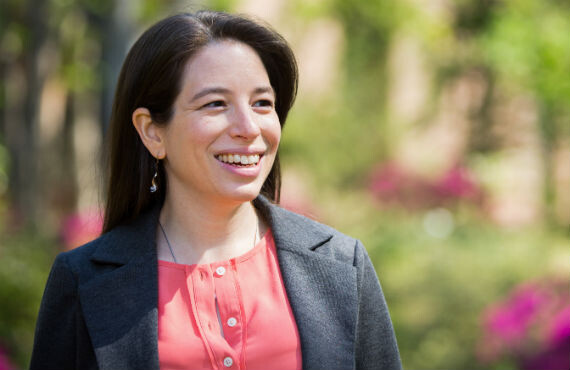Penn Research: Why Guided Play Matters to Developing Minds
Deena Weisberg spends a lot of time talking to preschoolers.
As a psychologist at the University of Pennsylvania, she’s studying how young children learn best, and in a new review paper in the journal Current Directions in Psychological Science, she and colleagues argue that “guided play,” that middle ground between free play and traditional classroom instruction, should be thoroughly incorporated into lessons for these developing minds.
The research team, led by Weisberg and Temple University’s Kathy Hirsh-Pasek and including scientists from the University of Delaware, the University of Cambridge and Carnegie Mellon University, set out first to construct a definition of guided play based on what others in the field had already laid out.
“Children learn best when they’re learning actively rather than just being passive recipients of information,” Weisberg said. “But they also need some kind of structure or guidance to get them to the learning goal.”
The field broadly agrees that neither extreme, complete free play or sit-down instruction, always works or works well in a vacuum. However, a middle ground can be murky and messy, leading to questions about how exactly to carry out a guided-play approach.
“We’re trying to delineate which of those shades of gray we think will be most effective,” Weisberg said.
She and her colleagues turned to the literature, analyzing more than 20 papers for theoretical and empirical evidence showing the efficacy of this approach for preschool and elementary-age children. They found examples across many disciplines, including math and engineering (learning shapes, constructing towers), language and science. Weisberg also mentioned geography and the 1990s TV-based game “Where in the World Is Carmen Sandiego?”
Carmen Sandiego is a fictional thief on the run. To win the game, the junior detective chasing her must correctly answer questions about cities and countries around the world. The learning element “is baked into the structure of the game,” she said, unlike, say, a race-car game that requires the player to solve a math problem before moving onto the next leg. In the latter case, the mathematics and driving just don’t relate.
The paper also cites well-designed exhibits at places like the Chicago Children’s Museum or the Please Touch Museum in Philadelphia to illustrate this concept. Strong displays allow children to freely explore but gently lead them to the intended lesson by way of that exploration.
“I conduct work at the Please Touch Museum. That is precisely designed along these lines,” Weisberg said. “A lot of informal learning institutions are.”
Weisberg admits that guided play isn’t the be-all-end-all and that some topics, such as teaching the structure of a cell or the history of dinosaurs, require a different pedagogical style. She also says such tactics won’t be the same for preschoolers as they will for third graders, nor does incorporating them necessarily require a complete overhaul of an entire school’s methodology. Rather, it can mean rethinking a single lesson plan or activity to start. And, she added, progress will likely happen incrementally.
Though the research leading to this paper focused on formal education, parents of young children can also employ some of these strategies.
“Ask open-ended questions instead of closed-ended questions. Try to keep the conversation going,” Weisberg said. “That provides the structure but allows them to answer more freely as opposed to asking them questions that have one right answer.”
Inquire about why the child built a tower in such a way or painted the picture she chose to paint, for example. Pair toy combinations and see how the child makes them interact. It’s about giving children the best structure in which to learn, she said.
“There’s value across this spectrum, in completely unfettered free play and guided play and in direct instruction,” Weisberg said. “I’m not arguing that this approach needs to be taken for absolutely everything. It just can’t be. But a lot of education has been driven solely toward that focus, ignoring that there are some things you can do through hands-on exploration.”
Ideally, she said, the paper will provide evidence to empower educators and policymakers who want to go in this direction to do so.








